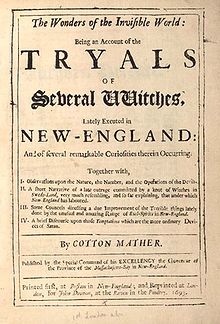I moved quite a bit when I was younger, but during those years we often lived in New England. As a kid it was easy to imagine that Halloween was invented in New England. It just seems so suited for it. Old cemeteries, tall, reaching trees with with rattling leaves, and creeping darkness that starts in early evening. The smell of fireplaces and apple cider fill the crisp air.
There may be no more quintessential scary New England story than the Salem Witch Trials.
In the summer of 1692 mass hysteria and accusations flew through colonial Massachusetts. We learned about this in school, and read The Crucible in high school. What I wish we had studied was the possible causes of the bizarre chapter in American history.

Looking at it now, with the benefit of 300 years of hindsight, it is clear there was no supernatural aspect of it. But what did those two girls see? Why were they having seizures? How did the event snowball to that level of madness?
I’ve read two interesting theories. One suggests that the girls ate or were exposed to ergot
…fungus ergot, which can be found in rye, wheat and other cereal grasses. Toxicologists say that eating ergot-contaminated foods can lead to muscle spasms, vomiting, delusions and hallucinations. Also, the fungus thrives in warm and damp climates—not too unlike the swampy meadows in Salem Village, where rye was the staple grain during the spring and summer months. Read more: http://www.smithsonianmag.com/history-archaeology/brief-salem.html#ixzz29CbtCsK8
The second idea has to do with the subsequent accusatations more than the initial incident. Two tavern owners were competing for the same business and one accused the other in order to clear the way, so to speak.
As Christine Sismondo writes in America Walks Into A Bar:
However, we can find ample anti-Parris activity going on at Bishop’s tavern, owned by Sarah and Edward Bishop, in ad-dition to the merry-making and shovel-boarding. This popular house of entertainment was rather conveniently located on Ipswich Road, smack-dab in the middle of that arduous commute between the rural farmingarea of Salem Village and the meeting-house in Salem Town. The Bishops weren’t the only entrepreneurs to figure out that Ipswich Road was prime real estate. There were several taverns on this major thoroughfare, from the very north end of the road, where the Bishops, Joshua Rea, and Walter Phillips had hung out shingles, all the way to thesouthern tip and hostler John Proctor. All were Putnam enemies, all had signed a petition opposing the installation of Samuel Parris, most were opposed to the witch trials, and many were later accused. ~Pg. 51
What do you think of these ideas? Do you have a theory?

